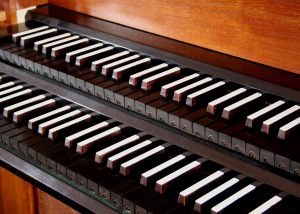A Brief History of Classical Music

History of classical music spans over a period of nearly one millennium, covering an era from about the end of the 10th century to the present day. It traces its roots in early Christian liturgical music which in turn was influenced by ancient Greek music.
There are three major time periods of classical music:
Early music period. It encompasses Medieval (ca.500-1400) and Renaissance (ca.1400-1600) periods.
The Medieval period was marked by introduction of Monophonic chant or plainsong. The latter dominated the musical scene until the end of the 10th century when it was gradually replaced by Polyphonic music.
The Renaissance period saw an increased use of instrumentation and popularisation of dancing. As a result, musical forms developed to accompany dancing. Another important innovation during the Renaissance period includes notation of music - the staff.
Common practice period. It includes Baroque (ca.1600-1750), Classical (ca.1750-1830) and Romantic (ca.1804-1949) periods.
During the Baroque era, classical music took up it standardised shape, while the main innovation was the sonata form which developed from canzona. Some of the greatest names of Baroque classical music include Johann Sebastian Bach, Antonio Monteverdi, Heinrich Schütz, Antonio Vivaldi, George Frideric Handel and Giuseppe Tartini.

The Classical period was marked by introduction of the piano as the main keyboard instrument and symphony as its own musical form, and popularisation of concerto that allowed virtuosos to demonstrate their skills in public. Some of the most famous composers of the era include Wolfgang Amadeus Mozart and Franz Haydn, while Franz Schubert and Ludwig van Beethoven are regarded as transitional Classical/Romantic composers.
Classical music during the Romantic period largely followed the Romantic movement in other art forms. It reveals a great deal of attention to the extension of melodic line and emotional elements. This period also saw the emergence of free-forms such as preludes, nocturnes and fantasias. The Romantic period was dominated by composers such as Giuseppe Verdi, Franz List, Niccolo Paganini, Johann Strauss I, Johann Strauss II, Richard Wagner, Johannes Brahms, Giacomo Puccini, Pyotr Ilyich Tchaikovsky, Bedrich Smetana, Antonin Dvorak, Robert Schumann, Gustav Mahler and Frederic Chopin.
Modern and contemporary period.
It overlaps with the common practice period as it also includes the 20th century classical music from 1900 onwards. Some early 20th century composers are considered to belong to the late Romantic period which is a part of the common practice period. Composers who can be regarded as modern and contemporary include Arnold Schoenberg, Pierre Boulez, Igor Stravinsky, Luigi Russolo, Sergei Prokofiev, Pierre Schaeffer, Karlheinz Stockhausen and many others who, however, created a variety of very different types of music.